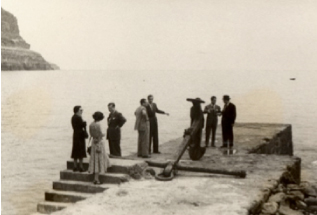PUERTO DE MOGÁN: Venice in the Atlantic
Oldest fishermen still have stuck in their memory the image of Puerto de Mogan before it became the stunning marina it is nowadays: a rolling-stone beach where their catch laid and their boats were stranded every day.
But the history of this place comes from far earlier in times, as archaeological remains from the primal aboriginal settlers can be found there. During the 19th century Mogan fishermen worked on a subsistence economy basis, selling their scarce surplus. From their underground dwellings set in caves near the coast, at the hills in the mouth of the great ravine, they watched the tuna fish stocks they would go fishing for.
Mogan experienced an economic upturn due to the industrialization of fishing, reaching its peak with the setting of a salted fish factory in 1911. This boost also developed the artisan fishing activities, which evolved to new fishing techniques and new types of boats, starting to use propellers in the 1930s.
With the boom of the tourism industry, Puerto de Mogan championed for freshness, making a difference from other areas in the island by building a yacht marina surrounded by a magical atmosphere of traditional houses, bougainvillea trees, hibiscus and little canals. Melting with the unstopping touristic frenzy, Mogan fishermen never quit going out on the sea and continue with their daily work while observed by curious tourists who would come to sample the fresh fish.
 /
/ 








